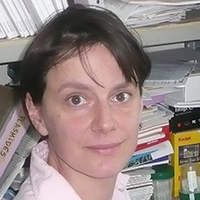ESR 9 – Genomic insights into interactions in green micro algae
Research project
Marine phytoplankton produces half of the oxygen we breathe and their astounding diversity is just starting to be unravelled. Many microbial phytoplankton are thought to be phototrophic, depending solely on inorganic sources of carbon and minerals for growth rather than preying on other planktonic cells. However, there is increasing evidence that symbiotic associations, to a large extent with bacteria, are required for vitamin or nutrient uptake for many eukaryotic microalgae. The main objective of this ESR is to obtain an overview of the diversity of photosynthetic eukaryotes from the Mamiellophyceae class and their interactions with viral and bacterial partners. This will be achieved by integrating single cell data obtained from TARA-oceans with knowledge about marine assemblages and publicly available “omics” sequence data. Bioinformatic approaches will enable common genes and functions between different associations to be identified. In silico analysis will be combined to experimental and modelling approaches to test predicted types of interactions between partners.
Supervisor
Early Stage Researcher
Host institution and location
PhD Program
Doctoral School ED 227 ‘ Diversity of Life’, University Pierre and Marie Curie, and Natural History Museum
Expected Results
Genome annotations of new marine phytoplanktonic eukaryotes and their bacterial and viral partners. Estimation of the proportion of virus-infected cells in natural populations of microalgae. Experimental inference of nature of interactions within natural communities of phytoplankton.

 Download SINGEK_ESR9_project_description.pdf
Download SINGEK_ESR9_project_description.pdf 

